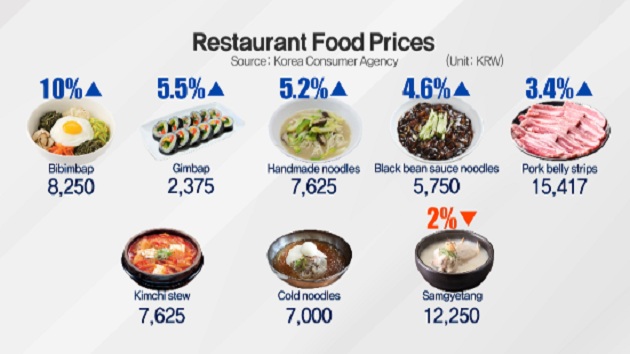
Statistics show that the consumer price index has stabilized. But local diners can’t seem to agree.
Consumers are discontent with the rising costs of eating out.
Todd Thacker reports.
It's getting pricier to eat out at local restaurants.
According to the Korea Consumer Agency, the cost of five out of the eight most popular restaurant dishes in Jeju has increased over the last 12 months.
Of these, the largest jump in price is for a healthy favorite. The mixed rice and vegetable dish called (비빔밥) bibimbap has risen by 10 percent to over 8,000 won on average.
(김밥) Gimbap rice rolls have risen by 5.5 percent.
Handmade chopped noodles and strips of pork belly follow at 5.2 percent and 3 percent, respectively.
Prices of kimchi stew and cold noodles have remained steady.
Only the price of (삼계탕) samgyetang, or chicken soup with ginseng, has dropped among the 8 representative Korean dishes.
Notably, Jeju has the nation's highest prices for three of the eight dishes, including kimchi stew.
These higher costs are proving to be a burden for local residents.
Four of the largest hamburger restaurant chains have increased their prices between one and two percent.
Coffee house chains are following this trend.
Experts attribute the price rise to increases in the cost of ingredients and labor.
Local makers of soju, a distilled alcoholic beverage, announced that they too will be raising their prices by between 6 and 7 percent beginning next month.
While the island is currently experiencing an economic downturn, consumer confidence is also sinking in the face of rising restaurant prices.
Todd Thacker, KCTV





